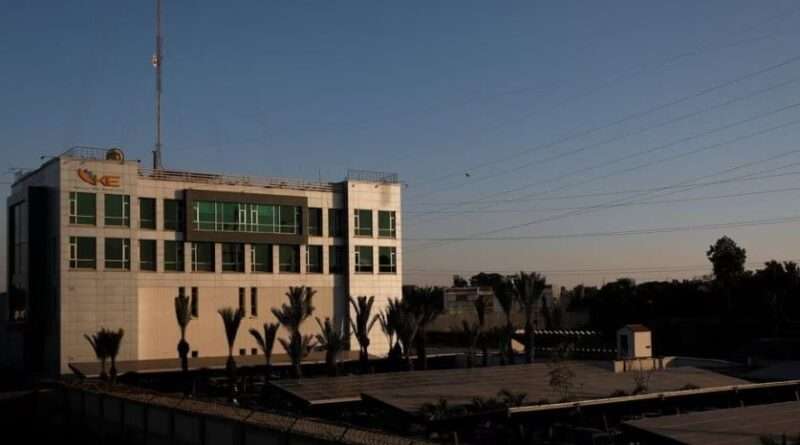K-Electric Solar Projects Receive Record Low Bids
|
Getting your Trinity Audio player ready...
|
Introduction
In a significant move towards expanding its renewable energy portfolio, K-Electric (KE), a major power utility in Pakistan, has recently received record-low bids for its 150 MW solar power projects in Winder and Bela. The competitive bidding process, which garnered eight bids for the 50 MW Winder project and seven for the 100 MW Bela project, demonstrates a positive step in the country’s push for cleaner energy. Despite challenges in attracting bids for renewable energy projects, these developments show promising signs for Pakistan’s energy future.
Background on K-Electric’s Renewable Energy Initiatives
K-Electric has been increasingly focused on integrating renewable energy into its power generation mix to meet the growing demand for sustainable and affordable energy in Pakistan. This initiative is in line with the country’s long-term energy strategies, which include reducing reliance on fossil fuels and embracing more eco-friendly alternatives. KE’s renewable energy initiatives have seen success with solar power projects such as Winder and Bela, two key projects that are expected to play an important role in its energy generation mix.
The Winder and Bela Solar Projects: A Step Toward Sustainability
The Winder and Bela solar projects are part of K-Electric’s broader strategy to increase the share of renewable energy in its generation portfolio. Collectively, these projects will contribute 150 MW of capacity, with 50 MW from Winder and 100 MW from Bela. KE plans to integrate 1,300 MW of renewable energy into its power generation portfolio, with the two solar projects marking a significant milestone toward achieving this target.
Key Features of the Winder and Bela Solar Projects
- Winder Project: The Winder solar project, located in the province of Balochistan, will have a capacity of 50 MW. Despite challenges faced by the country in the renewable energy bidding process, the Winder project attracted eight bids, showcasing the growing interest in solar energy projects in Pakistan.
- Bela Project: The Bela solar project, with a capacity of 100 MW, garnered seven bids. This larger project is seen as a crucial part of K-Electric’s plan to boost its renewable energy capacity, with the lowest bid being Rs11.20 per unit.
The Competitive Bidding Process and Record-Low Tariffs
One of the most remarkable aspects of these projects is the record-low tariffs that were offered during the bidding process. The lowest bid for the Winder project was Rs11.65 per unit, and for the Bela project, the lowest bid was Rs11.20 per unit. These low prices represent a significant step forward in making solar energy more affordable for consumers.
The bidding process was highly competitive, and despite Pakistan’s broader challenges in attracting bids for renewable energy projects, KE’s solar projects have set a new benchmark for future initiatives. Master Textile Mills Ltd., the company that submitted the lowest bids for both projects, has earned recognition for its competitive pricing and expertise in the energy sector.
Challenges in Attracting Bids for Renewable Energy Projects in Pakistan
Pakistan has faced several hurdles in attracting investment and bids for renewable energy projects, such as logistical difficulties and external restrictions on foreign companies. However, the success of K-Electric’s solar projects shows that these challenges can be overcome with the right incentives and project structuring.
National Electric Power Regulatory Authority (Nepra) and Its Role in the Process
The National Electric Power Regulatory Authority (Nepra) has played a critical role in overseeing the bidding process for KE’s solar projects. During a public hearing on the matter, Nepra members commended KE for its efforts in incorporating renewable energy into its generation mix and praised the utility for meeting the country’s sustainability goals.
Key Issues Addressed During the Public Hearing
During the public hearing, Nepra raised five key questions regarding KE’s Bidding Evaluation Report (BER):
- Adherence to Regulations: Whether KE followed the NEPRA Competitive Bidding Tariff Regulations 2017 (NCBTR).
- Prudence Checks: Whether KE complied with directives in the approved Request for Proposal (RFP) concerning prudence checks and the displacement of expensive energy units.
- Market Conditions: Whether the lowest bid tariffs accurately reflect prevailing market conditions.
- Delays in Bidding: Whether the one-month extension in the bidding process was justified.
- Technical Qualifications: Whether KE had measures in place to ensure that successful bidders were technically qualified, particularly in case of changes to equipment or suppliers.
KE’s Response and Assurances
KE responded positively to the concerns raised during the public hearing, assuring Nepra that all regulations under the NCBTR were followed during the bidding process. The company also explained that the delay in the bidding process was primarily due to external challenges, including restrictions on Chinese companies operating in Balochistan and the need for additional time for financiers to evaluate the projects.
Economic Impact and Benefits for Karachi Consumers
One of the key questions raised during the hearing was the economic benefit of these solar projects for consumers in Karachi. Shahab Qader, KE’s Chief Strategy Officer, responded by stating that the Winder and Bela solar projects are expected to save approximately Rs2.5 billion annually by displacing more expensive energy sources. This will result in substantial cost savings for consumers in Karachi.
Qader also addressed suggestions for rooftop solar solutions, explaining that while net-metering consumers currently sell electricity back to DISCOs at Rs27 per unit, the solar projects will generate electricity at nearly Rs11 per unit. This significant price difference is expected to help lower electricity rates for consumers.
KE’s Future Plans for Solar Energy Expansion
K-Electric is not stopping with the Winder and Bela projects. The utility aims to further increase its renewable energy capacity with additional solar and wind power projects. These initiatives align with Pakistan’s long-term vision of reducing its carbon footprint and transitioning to greener sources of energy.
Conclusion: A Turning Point for Pakistan’s Renewable Energy Sector
The record-low bids received for KE’s Winder and Bela solar projects are a clear indication of the growing interest in renewable energy in Pakistan. These projects not only contribute to KE’s broader energy goals but also serve as a model for future renewable energy projects in the country. The integration of 150 MW of solar energy into KE’s portfolio is an important milestone for both the utility and the nation’s energy sector.
As Pakistan continues its journey towards a more sustainable and green energy future, the success of these projects represents a promising step forward in achieving energy security, reducing costs, and protecting the environment.
FAQs
- What is the Winder solar project? The Winder solar project is a 50 MW solar power initiative located in Balochistan, Pakistan. It is part of K-Electric’s efforts to integrate renewable energy into its generation mix.
- What is the Bela solar project? The Bela solar project is a 100 MW solar power project located in Pakistan. It is one of the key renewable energy initiatives by K-Electric.
- How much will these solar projects save Karachi consumers? These solar projects are expected to save Karachi consumers approximately Rs2.5 billion annually by displacing more expensive energy sources.
- Why were there delays in the bidding process? The delay in the bidding process was primarily due to external challenges, including restrictions on Chinese companies in Balochistan and the need for financiers to evaluate the projects.
- What are K-Electric’s future plans for renewable energy? K-Electric plans to further increase its renewable energy capacity by incorporating additional solar and wind power projects, aiming for a total of 1,300 MW of renewable energy.




